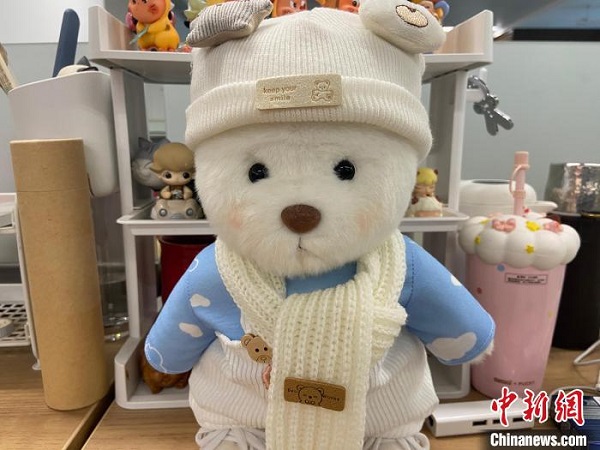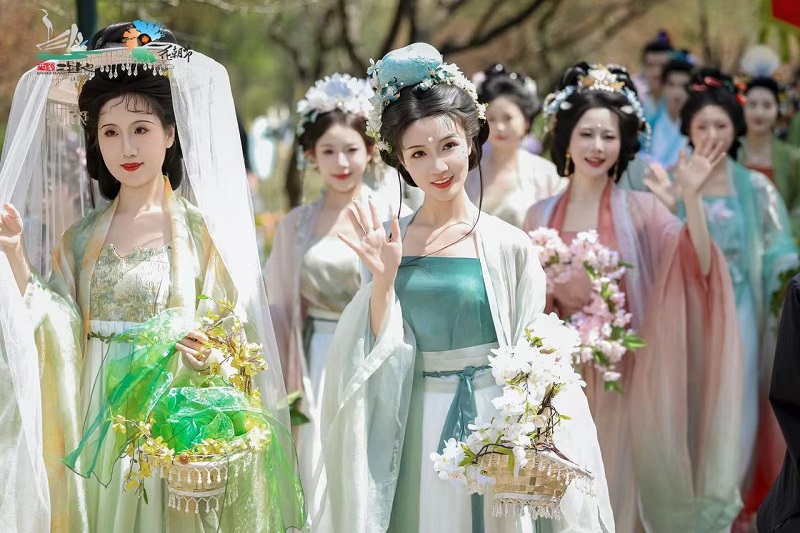A blend of comfort and connection, plush toys capture young consumers' hearts

Photo shows a toy bear. (Photo courtesy of the interviewee)
In the traditional toy industry, plush toys have always been linked to childhood, with interest fading once consumers hit 18. But that's no longer the case. A plush craze is taking the internet by storm, breaking age barriers and turning into a major cultural trend.
"We don't just sell plush toys—we offer full outfits and even DIY options," said Xiao Yi, owner of a DIY workshop in Hangzhou, east China's Zhejiang Province. As plush toys become things connecting people, more businesses are jumping on board, offering products and services that cater to the growing demand for personalization.
Beyond plush toys, everything from landmarks and cultural relics to food items are getting a cute, cuddly makeover, drawing shoppers in with their emotional appeal.
In Shaoxing city, Zhejiang Province, stinky tofu has been turned into plush keychains. "It's so cute! The little faces are really comforting," said a tourist named Wang Dandan. "You can't take fried stinky tofu home, but a plush version makes the perfect souvenir."
Plush toys, inspired by food from places across China, including knife-cut noodles from north China's Shanxi Province, malatang from Tianshui, northwest China's Gansu Province, and roujiamo, a popular street food from northwest China's Shaanxi Province known as the "Chinese hamburger," are winning over young consumers with immersive, interactive experiences they offer.
According to the China Toy & Juvenile Products Association, Gen Z is now the main force behind the plush toy market and plush products are now a trendy lifestyle choice beloved by adults.
"Plush toys turn cultural memories into something tangible and huggable," said Li Hanliang, a PhD of the International School of Cultural Tourism, Hangzhou City University.
Li sees this as both a reinvention of tradition and the birth of a new cultural identity, giving creative products a fresh appeal.
Wang Xianghua, executive vice president of the Zhejiang Academy of Cultural and Tourism Development, noted that today's young consumers see cultural products as more than just sources of comfort—they use them to forge social circles.
"Cultural products are no longer just emotional outlets; they've become a new form of medium, connecting young people through shared communities," Wang said.
-
Xixi Wetland invites visitors to Huazhao Festival
March 25, 2025
-
Hangzhou sets standard for concert hosting
March 19, 2025
-
What is making Hangzhou the new tech powerhouse of China?
March 10, 2025
-
Inside Hangzhou: China's high-tech dream factory
March 12, 2025



